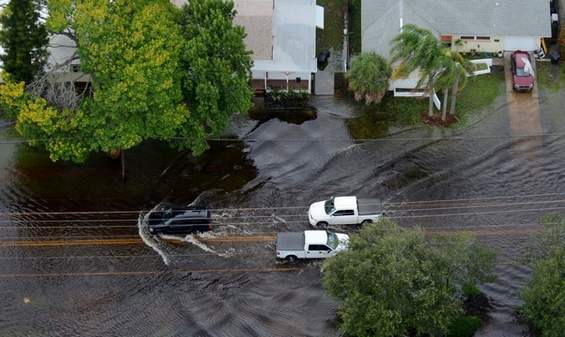
Q: I’m hearing a ton of talk and seeing a bunch of articles about flood insurance hikes happening in Florida, some are saying it could force homeowners out of their homes if these changes go into effect. What’s the deal?
A: If you are like me, yes, all the talk on flood insurance hikes lately in Florida is very confusing. As I bought a home last year on the water, and obviously in a flood zone – I panicked a bit too. So, to get the skinny, I did a bit of research on the facts and also contacted my insurance agent who said:
“There is a lot of information out there! Firstly, the dramatic rate increase are on pre firm (prior to 1975) homes. Your home is post firm, (1979). The owners of pre firm homes will be required to get an elevation certificate to properly rate the flood. Your policy was written with an elevation certificate so was properly rated. You can expect an increase of between 6 and 15% over four years, so you are not really affected as compared to many.”
Okay, so WHEW! for me – but for the rest of you… here’s a bit more on story.
Many older homes in flood zones have long benefited from a big subsidy that kept flood insurance rates very low. Starting October 1st, someone owning a subsidized single family home in a high-risk flood zone, will typically see a rise 16-17%. That doesn’t include a 5% charge toward the new flood reserve fund. FEMA has not yet determined new rates for subsidized condos or multifamily homes. For businesses and investors with vacation and second homes in those areas, the rates will rise 25% a year. The rate increases will continue until their premiums reflect the full market risk.
The law also requires that flood zone maps be updated, in some places for the first time in decades, a change that is shifting many homeowners into flood zones who had previously been exempt — as well as moving other homeowners out of flood zones. Federal law requires that homeowners in flood zones carry flood insurance in order to obtain a mortgage.
This rate hike is due to the Biggert-Waters Flood Insurance Reform Act of 2012 which calls for eliminating some artificially low rates and discounts. Biggert-Waters was intended to help keep the National Flood Insurance Program afloat after suffering huge losses from Hurricane Katrina.
Most flood policyholders nationwide, like myself, will see only single-digit increases in rates next year. In fact, just 20% of all flood policies in the United States are subsidized. But in Florida, the impact will be much greater. With 40% of all flood policies nationwide, Florida has by far the most subsidized homes.
Florida Gov. Rick Scott and Sen. Bill Nelson have also joined a growing number of elected officials from states such as Louisiana, New York and New Jersey calling for a delay in rate increases that are meant to balance a $24-billion deficit in the National Flood Insurance Program.
The House has passed an amendment that would put premium hikes on hold for a year, but the Senate has yet to vote on the measure. Time is running out, as the changes are set to take effect Oct. 1.
Barring any congressional action, here are parts of the Biggert-Waters Flood Insurance Reform Act going into effect Oct. 1:
• Owners of homes in flood zones that were subsidized with lower rates could face an annual rate increase of 16 to 17%, plus a 5% fee going toward a new flood insurance reserve fund.
• Anyone who bought a subsidized home after July 6, 2012, loses the subsidy upon the next renewal.
• Owners of businesses with subsidized policies and those property owners with severe repetitive losses will see rates rising 25 percent a year until their premiums reflect true market risk.
For information about the changing flood insurance rates, call your insurance agent, or visit www.floodsmart.gov.
More articles on rising flood insurance issues for Pinellas & Hillsborough Counties found here and here.


Leave a Reply